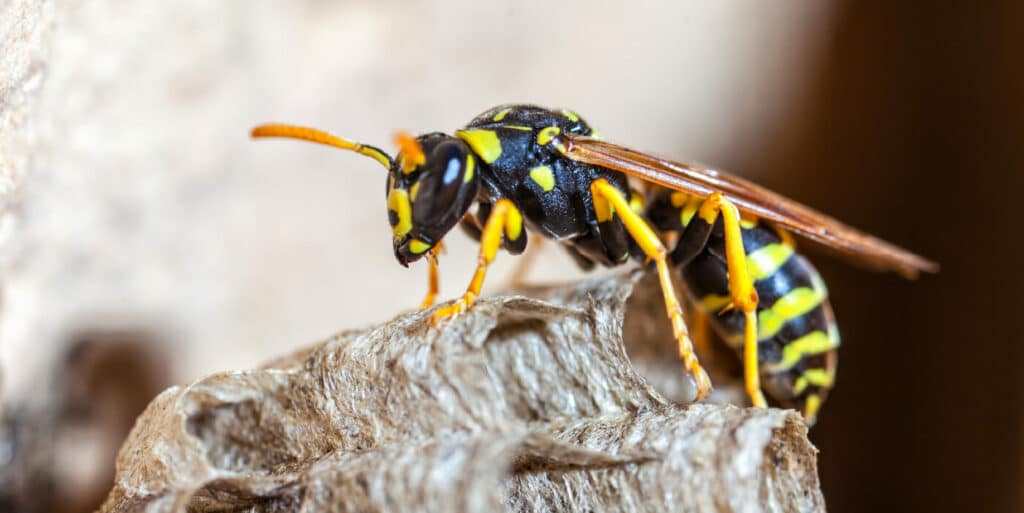In the intricate tapestry of nature, paper wasps play a crucial role, contributing to the balance of ecosystems by preying on various pests. However, when these buzzing architects decide to build their intricate nests in and around our homes, they can quickly turn from fascinating insects to potential pests. In this article, we’ll explore the world of paper wasps, their fascinating behaviors, and effective strategies for managing their presence.
Understanding Paper Wasps
Paper wasps belong to the family Vespidae and are known for their distinctive appearance, marked by slender bodies, narrow waists, and long legs. One of the key features that distinguish them from other wasp species is the paper-like nests they construct. These nests are meticulously crafted from plant fibers, wood, and saliva, creating a distinctive umbrella shape.
These social insects exhibit a hierarchical structure within their colonies. A typical colony consists of a queen, workers, and males. The queen’s primary role is to lay eggs, while workers are responsible for building and maintaining the nest, foraging for food, and caring for the developing larvae. Male paper wasps, on the other hand, contribute solely to mating activities.
Identification
Identifying paper wasps is crucial for effective pest control. While they come in various species, some common characteristics can help you distinguish them from other wasps:

Color and Markings
Paper wasps typically display a combination of black, brown, and yellow colors. Their bodies may have distinct patterns or markings, aiding in identification.
Body Shape
These wasps have a distinctive long and slender body, with a narrow waist connecting the thorax and abdomen. This sets them apart from other wasp species like yellow jackets or hornets.
Nest Appearance
The nests of paper wasps are a standout feature. Look for umbrella-shaped structures attached to eaves, branches, or other sheltered locations. The texture is papery and can vary in color from light gray to brown.
Behavior and Habits
Understanding the behavior and habits of paper wasps is essential for effective pest control.
Here are some key aspects to consider:
Foraging Behavior
Paper wasps are beneficial pollinators as they feed on nectar and pollen. However, they can also become a nuisance when foraging for food scraps and sugary substances around human habitats.
Defensive Nature
Paper wasps are known for their defensive behavior, especially around their nests. If they perceive a threat, they can become aggressive and deliver painful stings. It’s important to exercise caution and avoid provoking them.
Nesting Sites
Understanding where paper wasps prefer to build their nests is crucial for controlling them. Common nesting sites include the eaves of buildings, tree branches, and shrubbery. Regular inspections can help identify and address nests early on.
Managing Paper Wasp Nests
While paper wasps can contribute positively to the ecosystem, their proximity to human dwellings can pose challenges. Here are some effective strategies for managing paper wasp nests:
Early Detection
Regular inspections of your property, especially in spring and early summer, can help identify paper wasp nests in their early stages. Small nests are easier to manage and less likely to pose a threat.
Professional Assistance
If you discover a paper wasp nest on your property, consider seeking professional pest control assistance. Experts can efficiently remove the nest, minimizing the risk of stings.
Proactive Measures
Implementing proactive measures can discourage paper wasps from building nests in or around your home. Seal potential entry points, such as gaps in windows and doors, and keep outdoor food sources well-contained.
Conclusion
Paper wasps are intricate creatures that can contribute positively to the environment. However, when their nests encroach upon human habitats, it’s important to strike a balance between coexistence and effective pest management. By understanding their behavior, identifying nests early on, and adopting effective control methods, we can ensure a harmonious relationship with these buzzing neighbors.









